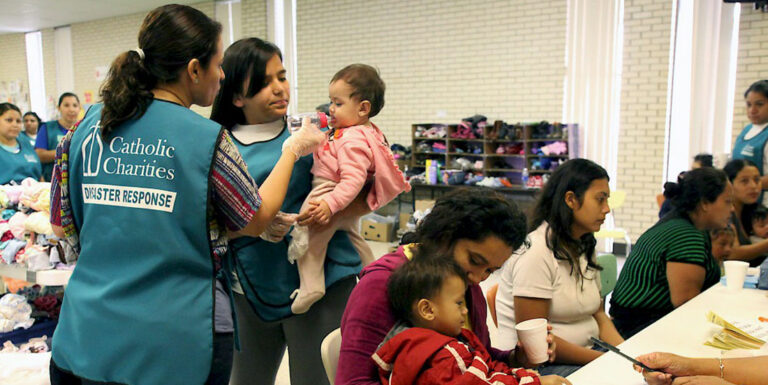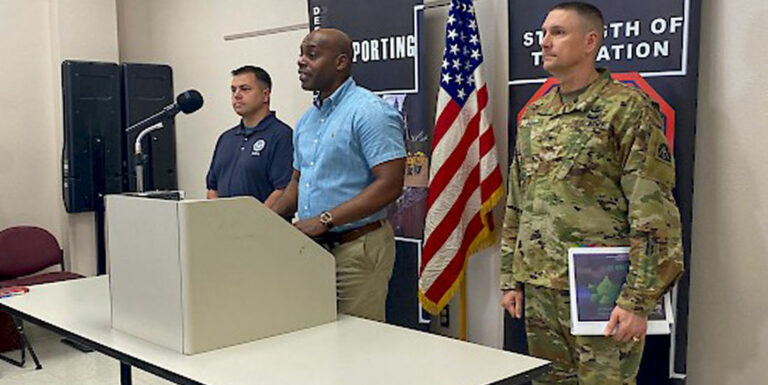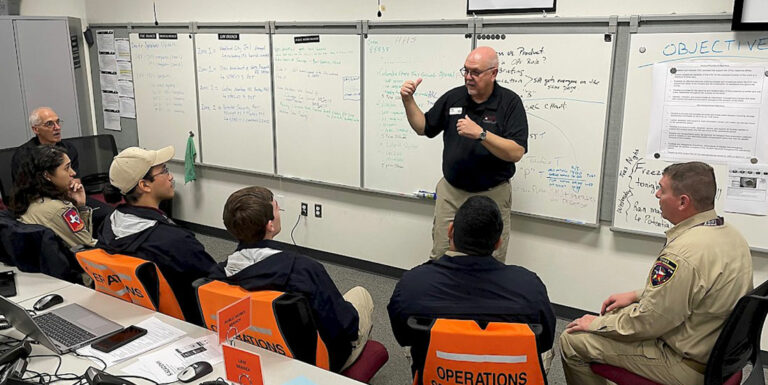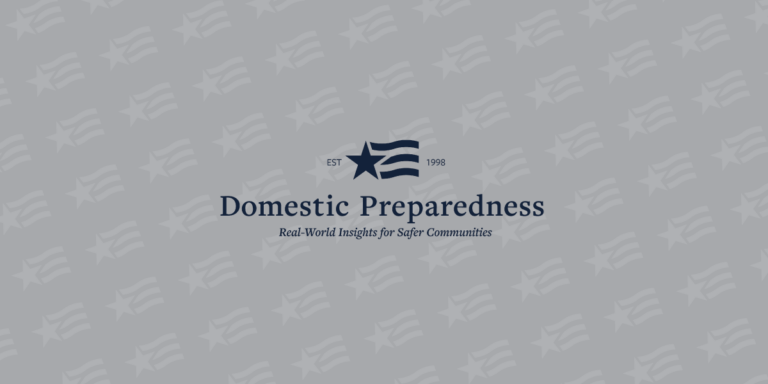
Article Archive by Year

An eclipse is not just about the sky getting dark. There are many considerations for emergency planners and public safety professionals to ensure the safety of their communities. Learn the lessons from the 2017 eclipse to better prepare for the next event.

Preparedness Promoters – Assessing Marginalized Populations
April 26, 2023
Certain populations are more vulnerable when faced with disasters. By adapting a public health model, community leaders can identify common vulnerability indicators and close the gaps between emergency management plans and target population vulnerabilities. Learn how.

Covenant School – Reviewing Another Tragic Shooting
April 19, 2023
The Covenant School shooting is another reminder of active shooter trends. This article reviews the chain of events from that tragic event, post-incident reviews, and what communities are and should be doing to prepare for and prevent future active shooter incidents.

Labor Trafficking – An Underreported Escalating Crisis
April 19, 2023
Labor trafficking affects many more people in the U.S. than sex trafficking, but it gets much less attention. Learn what the government is doing and what else community stakeholders can do now to better protect people from this growing threat.

The DoD Defense Coordinating Element and How It Is Certified
April 12, 2023
Besides the main mission of defending the homeland, Department of Defense capabilities also provide critical support to local, state, and federal civilian partners during major disasters. Learn how Army North’s defense coordinating element’s mission and composition ready their units to perform this additional mission when needed.

Biosafety Laboratory Issues and Failures
April 12, 2023
Concerns regarding unexpected biological incidents and their public health implications were discussed in a 2014 Domestic Preparedness biosecurity and bioterrorism article. From the improper possession and storage of decades-old live smallpox virus in a former Food and Drug Administration laboratory (lab) on the National Institute of Health (NIH) campus to

Hazmat on the Rail
April 5, 2023
Since February 3, 2023, following the train derailment in East Palestine, Ohio, the public has closely followed reports and commentary by media outlets and elected officials. This incident has become more controversial and publicized than others in recent years and has caused a public outcry for change.

Preparing the Next Generation for Increasing Disasters
April 5, 2023
Preparing the next generation of emergency preparedness and response professionals requires educational programs that teach critical thinking and life-saving strategies. Many programs and resources address these needs, but more educational and collaborative opportunities should be considered to meet the growing needs.

Information Sharing – A Powerful Life-Saving Tool
March 29, 2023
Information sharing is a valuable tool used for various purposes. However, this tool’s power in preparing for and responding to emergencies should not be underestimated. Unfortunately, critical information and data can sometimes be misused, not effectively leveraged, not shared, or simply ignored. In these scenarios, it is more difficult to

Guidance for Preparing Professionals Mentally for the Worst
March 22, 2023
Professional groups have debated and researched the best practices relating to the standards and quality of care sufficient to maintain minimum standards during a disaster. Due to the fluid nature of a disaster, it is difficult to abide by a standard that will fit every situation. For example, the onset
Eclipses Again Will Darken the Sky in 2023 and 2024
April 26, 2023
An eclipse is not just about the sky getting dark. There are many considerations for emergency planners and public safety professionals to ensure the safety of their communities. Learn the lessons from the 2017 eclipse to better prepare for the next event.
Preparedness Promoters – Assessing Marginalized Populations
April 26, 2023
Certain populations are more vulnerable when faced with disasters. By adapting a public health model, community leaders can identify common vulnerability indicators and close the gaps between emergency management plans and target population vulnerabilities. Learn how.
Covenant School – Reviewing Another Tragic Shooting
April 19, 2023
The Covenant School shooting is another reminder of active shooter trends. This article reviews the chain of events from that tragic event, post-incident reviews, and what communities are and should be doing to prepare for and prevent future active shooter incidents.
Labor Trafficking – An Underreported Escalating Crisis
April 19, 2023
Labor trafficking affects many more people in the U.S. than sex trafficking, but it gets much less attention. Learn what the government is doing and what else community stakeholders can do now to better protect people from this growing threat.
The DoD Defense Coordinating Element and How It Is Certified
April 12, 2023
Besides the main mission of defending the homeland, Department of Defense capabilities also provide critical support to local, state, and federal civilian partners during major disasters. Learn how Army North’s defense coordinating element’s mission and composition ready their units to perform this additional mission when needed.
Biosafety Laboratory Issues and Failures
April 12, 2023
Concerns regarding unexpected biological incidents and their public health implications were discussed in a 2014 Domestic Preparedness biosecurity and bioterrorism article. From the improper possession and storage of decades-old live smallpox virus in a former Food and Drug Administration laboratory (lab) on the National Institute of Health (NIH) campus to
Hazmat on the Rail
April 5, 2023
Since February 3, 2023, following the train derailment in East Palestine, Ohio, the public has closely followed reports and commentary by media outlets and elected officials. This incident has become more controversial and publicized than others in recent years and has caused a public outcry for change.
Preparing the Next Generation for Increasing Disasters
April 5, 2023
Preparing the next generation of emergency preparedness and response professionals requires educational programs that teach critical thinking and life-saving strategies. Many programs and resources address these needs, but more educational and collaborative opportunities should be considered to meet the growing needs.
Information Sharing – A Powerful Life-Saving Tool
March 29, 2023
Information sharing is a valuable tool used for various purposes. However, this tool’s power in preparing for and responding to emergencies should not be underestimated. Unfortunately, critical information and data can sometimes be misused, not effectively leveraged, not shared, or simply ignored. In these scenarios, it is more difficult to
Guidance for Preparing Professionals Mentally for the Worst
March 22, 2023
Professional groups have debated and researched the best practices relating to the standards and quality of care sufficient to maintain minimum standards during a disaster. Due to the fluid nature of a disaster, it is difficult to abide by a standard that will fit every situation. For example, the onset
Follow Us
Get Instant Access
Subscribe today to Domestic Preparedness and get real-world insights for safer communities.
ARchives
Article Out Loud – Hazard Detection: “Bring Your Own Protection”
May 16, 2023
Public safety technologies are constantly evolving. Perhaps innovative concepts like “Bring Your Own Protection,” which researchers at George Mason University proposed in 2016, is a solution for today’s challenges.
Article Out Loud – EMS in the Fire Service – A New Trend in Patient Care
May 16, 2023
What started as a new trend in patient care in 2005 continues today with robust medical training for the fire service to manage hazardous materials incidents such as chemical spills and biological hazards.
Article Out Loud – Challenges With Pediatric Mass Care Feeding
May 10, 2023
Infant and toddler life-sustaining feeding during disasters – via human milk and commercial infant formulas – requires a complex set of logistical and operational missions, including federal support and whole-community partnerships. Learn what organizations need to do.
Article Out Loud – Keeping Schools Safe During the Threat of Nuclear Attacks
May 10, 2023
The hands of the so-called Doomsday Clock are now set to 90 seconds to midnight, reflecting that experts believe the world is closer to a global nuclear catastrophe than it has ever been. All-hazards plans and threat assessments should reflect this potential increased threat.
Article Out Loud – Civil Support Teams 101 – Removing Misconceptions
May 9, 2023
A Domestic Preparedness report published in March 2014 revealed some misconceptions about a valuable National Guard resource. This article and accompanying report remove those misconceptions.
Article Out Loud – Early Detection of Zoonotic Emerging Infectious Diseases
May 9, 2023
As the world realizes that the SARS-CoV-2 virus is likely here to stay, biosurveillance experts add to the lessons learned described in this 2013 article to enhance the detection and prevention of future pandemics.
Article Out Loud – Labor Trafficking – The Case Study of Marco
May 3, 2023
Countless immigrants like Marco do not self-identify as labor trafficking victims, yet this increasing crime needs to be addressed. Learn how communities can better protect these vulnerable populations.
Article Out Loud – Perfect Storm: Albuterol Shortage & Supply Chain Upset
May 3, 2023
The current albuterol solution shortage crisis could impact tens of millions of individuals, families, and frontline providers. This article shares some actionable steps the healthcare sector and its partners can take to remedy the shortage and mitigate damage.
Article Out Loud – Civil Disturbance Resilience-Planning, Technology & Partnerships
May 2, 2023
A peaceful protest can quickly turn to violence, and private-sector corporations sometimes get caught in the middle. Learn how one company ensures the safety of its personnel in this 2015 article.
Article Out Loud – Hospital Security: An Age-Old Problem Becomes Increasingly Important
May 2, 2023
Some states are considering bills to better protect hospital workers from violence. Although trends show an increase in violence, this 2008 article explains how this important issue has been a longtime concern.
Follow Us
Get Instant Access
Subscribe today to Domestic Preparedness and get real-world insights for safer communities.


